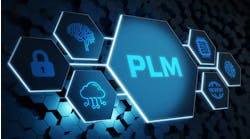Global technology and software provider Emerson announced that a new executive board of key life sciences stakeholders will help define, review, and demonstrate prototypes for Emerson technologies that will accelerate lifesaving drugs to market.
Emerson announced that it will collaborate through the new One-Click Technology Transfer Board of executives with three customers—vaccine and drug makers Fujifilm Diosynth Biotechnologies, Merck and Pfizer—to develop strategies, solutions and guidelines to convert today’s life sciences manufacturing recipe transfer process into a digitalized production platform. Digitalizing recipe technology transfer will reduce the time, effort and risk of managing, sharing and translating information to help get new drug therapies to patients faster, according to an Oct. 4 release from Emerson.
“What we learned through the pandemic was that with hyper-focused investment and coordination, new treatments can be brought to market safely and also at warp speed,” said Nathan Pettus, president of Emerson’s process systems and solutions business. “Bringing these key industry leaders together—and dedicating a new research center to advancing technology and standards—will help make the lessons learned more systemic, accelerating the development pipeline and safely supporting patients with lifesaving and life-improving treatments.”
See also: Sharing is caring: Webinar covers how pooled data amps up performance
Emerson will also open a dedicated research center to accelerate the development of One-Click Technology Transfer software, the company said. Located in the Singapore life sciences manufacturing hub that is home to eight of the 10 global pharmaceutical companies, Emerson’s new research center will design, develop and verify the software and digitalized production platform.
“This industry is highly regulated to ensure that lifesaving and enriching medicines are of dependable and consistent quality,” Pettus added.
Life sciences companies spend inordinate amounts of time and money to move information—recipes, process sequences, operating parameters, equipment characteristics, quality requirements and more—among disparate applications and databases.
Digitizing drug recipes
Emerson’s One-Click Technology Transfer capabilities will help digitalize drug recipes and recipe management, from discovery and development to production at scale, providing valuable translations between drug recipe requirements and manufacturing processes while establishing best practices and creating a framework to unify disconnected systems into a holistic platform.
The board will define reference data models and objects for one-click manufacturing, create the framework for a centralized recipe transport and translation platform that is scalable and extensible, and define and implement standards for version and quality control.
Emerson’s data scientists and software developers at the research center will use the computer software development technologies to perform rapid prototyping to test and verify concepts. The software, developed through rapid prototyping, will be tested and proven, working across the One-Click Technology Transfer Board company supply chains as appropriate.
“The life sciences industry is a very close-knit community and ecosystem where successful solutions can rapidly spread and completely alter the landscape,” said Lars Petersen, president and CEO of Fujifilm Diosynth Biotechnologies. “The generations of life sciences expertise in the current partners of the One-Click Technology Transfer Executive Board will help ensure successful digitalization solutions also promote scalability, standardization and best practices as they influence the coming decades of life sciences innovation and benefits for patients.”


